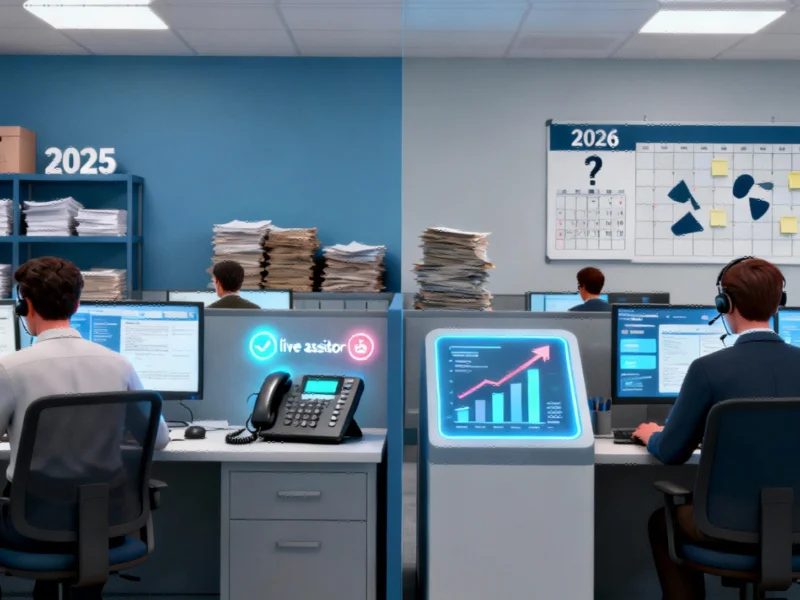2025 Tax Season Performance: A Mixed Report Card
The Treasury Inspector General for Tax Administration (TIGTA) has released its comprehensive assessment of the 2025 tax filing season, revealing both significant achievements and emerging concerns. While the IRS successfully processed more returns and improved telephone service levels compared to previous years, substantial workforce reductions and operational challenges cast a shadow over the agency’s ability to maintain this performance into 2026.
According to the report, the IRS processed 144.8 million individual tax returns by the May 3, 2025 deadline, with nearly 96% filed electronically. The agency exceeded its 85% level of service goal for telephone assistance during the filing season, thanks to strategic staffing decisions that protected critical positions through mid-2025. However, these temporary protections are set to expire, raising questions about future service quality as the IRS faces significant staffing challenges that could impact next year’s operations.
Customer Service Improvements and Limitations
The IRS made notable strides in taxpayer assistance during the 2025 season. The IRS.gov website recorded 343.8 million visits, while telephone wait times averaged as low as three minutes during peak periods. The agency implemented callback options when wait times exceeded 15 minutes, demonstrating responsiveness to taxpayer needs.
In-person assistance presented a more complex picture. While Taxpayer Assistance Centers (TACs) served 1.6 million taxpayers by May 3, 2025, this represented an 11% decrease from the previous fiscal year. Conversely, fiscal year 2025 saw a 9% increase in in-person assistance compared to 2024, highlighting the ongoing importance of face-to-face support for taxpayers with complex issues.
Fraud Prevention Successes and Emerging Threats
The IRS demonstrated strong performance in combating tax fraud, stopping nearly $2 billion in fraudulent refunds across more than 132,000 returns as of April 26, 2025. This represents nearly 99% of all identified fraudulent returns. The agency attributed the increased detection rate to several factors, including schemes publicized on social media that allowed for earlier intervention.
However, this success may be difficult to maintain. With an 18% staffing reduction in fraud prevention units, TIGTA estimates the IRS might fail to stop approximately 23,760 fraudulent returns and $360 million in fraudulent refunds during the 2026 season. This comes at a time when technological advancements are creating both new opportunities and new vulnerabilities in financial systems.
The Staffing Crisis: Impacts Across Key Functions
The IRS has lost thousands of employees since January 2025, with critical functions experiencing workforce reductions between 17-19%. These losses span multiple departments:
- Submission Processing: 17% workforce reduction
- Accounts Management: 19% workforce reduction
- Field Assistance: 17% workforce reduction
- Fraud Prevention: 18% workforce reduction
- Information Technology: 25% workforce reduction (2,163 employees)
TIGTA expressed particular concern about how these reductions will affect the 2026 filing season. “We are concerned about how this will impact the 2026 Filing Season,” the report stated bluntly, highlighting that unprocessed inventories from 2025 will carry over, potentially causing refund delays and requiring interest payments to taxpayers.
Operational Challenges and Digital Transformation Efforts
The IRS’s “Zero Paper Initiative,” launched in April 2025, aims to convert paper submissions into digital formats to streamline processing. The program focuses on digitizing Forms 940, 941, and 1040, which represent 78% of paper-filed forms. However, the initiative has already encountered significant setbacks.
In May 2025, the IRS shipped over 800,000 returns to a contractor for scanning, but 600,000 were returned for manual processing when the vendor failed to meet deadlines. This highlights the challenges of implementing new technological solutions in complex government systems and raises questions about whether digital transformation can adequately compensate for staffing losses.
Legislative Changes and System Updates
Compounding these challenges, the One Big Beautiful Bill Act (OBBBA) requires significant IRS system updates before the 2026 tax filing season. The agency must:
- Update tax forms, schedules, and publications to reflect new tax benefits
- Program new business rules to detect tax return errors
- Update existing electronic filing programs
- Modify fraud detection systems to account for legislative changes
These requirements come as the IRS’s IT department has lost 25% of its workforce, creating what TIGTA describes as “additional challenges” for the 2026 season. The timing coincides with broader industry trends in technology infrastructure that are affecting multiple sectors.
Volunteer Programs and Alternative Service Channels
Recognizing the constraints on traditional service channels, the IRS continues to rely on volunteer programs to supplement its services. The Volunteer Income Tax Assistance (VITA) and Tax Counseling for the Elderly programs provide no-cost tax preparation and e-filing to low-to-moderate income and elderly taxpayers.
These programs represent a critical component of the IRS’s service strategy, particularly as staffing constraints limit traditional assistance options. The success of these partnerships reflects how organizations across sectors are developing innovative approaches to service delivery amid resource constraints.
Looking Ahead to 2026: A Precarious Position
IRS management projects the need to hire approximately 3,500 new employees to maintain 85% telephone service levels during the 2026 tax filing season. Additionally, Accounts Management adjustments inventory could grow to approximately six million, nearly double the pandemic peak and twice the fiscal year 2025 level of three million.
However, most IRS functions remain under an indefinite hiring freeze, and the window for hiring and training personnel for the 2026 season is rapidly closing. IRS management has indicated that onboarding would need to begin by October 2025 to have employees trained before the next filing season begins.
The combination of staffing losses, legislative changes, and operational challenges creates what TIGTA characterizes as a “perfect storm” threatening the IRS’s ability to maintain service levels. While the 2025 season demonstrated the agency’s capacity for improvement under favorable conditions, the 2026 season will test whether these gains can be sustained amid significant headwinds.
This article aggregates information from publicly available sources. All trademarks and copyrights belong to their respective owners.



